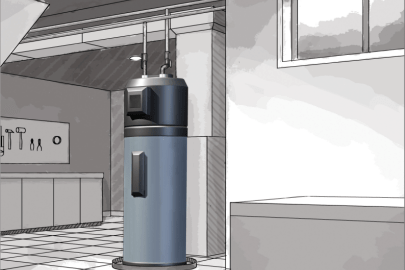Easy Steps to Caring for Your Home's Hot Water SystemWays to Effectively Maintain Your Home's Hot Water System
Easy Steps to Caring for Your Home's Hot Water SystemWays to Effectively Maintain Your Home's Hot Water System
Blog Article
Do you find yourself trying to locate insight on Water Heater Maintenance Tips You Can't Afford to Forget?

Hot water is vital for everyday convenience, whether it's for a revitalizing shower or washing dishes. To ensure your hot water system runs effectively and lasts much longer, normal upkeep is key. This write-up gives practical tips and insights on just how to preserve your home's warm water system to stay clear of disturbances and expensive fixings.
Intro
Keeping your home's hot water system might seem challenging, however with a few basic actions, you can guarantee it runs efficiently for years to find. This guide covers whatever from comprehending your hot water system to DIY maintenance tips and understanding when to contact professional help.
Importance of Keeping Your Warm Water System
Normal upkeep not just prolongs the life expectancy of your hot water system but additionally guarantees it runs effectively. Neglecting maintenance can bring about lowered performance, higher energy costs, and also early failing of the system.
Indications Your Warm Water System Demands Upkeep
Knowing when your warm water system requires interest can avoid major issues. Keep an eye out for indicators such as irregular water temperature, weird sounds from the heating unit, or rustic water.
Understanding Your Warm Water System
Prior to diving right into maintenance tasks, it's handy to comprehend the basic components of your warm water system. Normally, this includes the water heater itself, pipelines, anode rods, and temperature level controls.
Month-to-month Maintenance Tasks
Regular month-to-month checks can assist catch small problems before they rise.
Purging the Water Heater
Purging your hot water heater removes debris accumulation, improving performance and extending its life.
Checking and Changing Anode Rods
Anode rods prevent deterioration inside the storage tank. Inspecting and changing them when worn out is critical.
Examining and Readjusting Temperature Settings
Readjusting the temperature setups guarantees optimum efficiency and safety.
Do It Yourself Tips for Maintenance
You can do several upkeep tasks on your own to keep your warm water system in top problem.
Looking for Leaks
Consistently examine pipelines and connections for leakages, as these can lead to water damage and greater bills.
Examining Pressure Relief Valves
Examining the pressure safety valve ensures it operates correctly and stops excessive stress build-up.
Protecting Pipelines
Insulating warm water pipelines decreases warmth loss and can save power.
When to Call a Specialist
While DIY upkeep is beneficial, some issues call for professional competence.
Facility Issues Requiring Expert Aid
Examples include significant leaks, electrical issues, or if your hot water heater is regularly underperforming.
Regular Specialist Maintenance Advantages
Specialist upkeep can include extensive assessments, tune-ups, and making sure conformity with safety standards.
Final thought
Normal upkeep of your home's hot water system is vital for effectiveness, durability, and price financial savings. By following these tips and knowing when to seek expert aid, you can ensure a trusted supply of hot water without unexpected disturbances.
How to Maintain an Instant Hot Water Heater
Before tinkering with your hot water heater, make sure that it’s not powered on. You also have to turn off the main circuit breaker and shut off the main gas line to prevent accidents. Also turn off the water valves connected to your unit to prevent water from flowing into and out of the appliance. 2. When you’re done, you have to detach the purge valves’ caps. These look like the letter “T” and are situated on either side of the water valves. Doing so will release any pressure that has accumulated inside the valves while at the same time avoid hot water from shooting out and burning your skin. 3. When the purge valves’ caps are removed, you have to connect your hosing lines to the valves. Your unit should have come with three hoses but if it didn’t, you can purchase these things from any hardware or home repair shops. You can also get them from retail stores that sell water heating systems. Read the user’s manual and follow it to complete this task properly. When the hosing lines are connected, open the purge port’s valves. 4. You should never use harsh chemical cleaners or solutions when cleaning your unit. Make use of white vinegar instead. It should be undiluted and you’ll probably use about 2 gallons. 5. Now flush your water heater. This task should probably take about 40 minutes. We can’t give you specific directions for this because the procedure is carried out depending on the type, model and brand of your heater. With that being said, refer to the user’s manual. 6. When you’re done draining the unit, you have to turn off the purge port valves again. Remove the hosing lines that you earlier installed on each of the water valves. Put the valve caps (purge port) back in their respective places and be very careful so as not to damage the rubber discs that are found inside these caps. 7. Now that everything’s back in place, check your user’s manual again to find out how to reactivate your water heating system. 8. Once it is working, turn one of your hot water faucets on just to let air pass through the heater’s water supply pipes. Leave the tap on until water flows smoothly out of it. https://www.orrplumbing.com/blog/2014/september/how-to-maintain-an-instant-hot-water-heater/

Hopefully you liked our section about Tips For Maintaining Your Hot Water Heater. Many thanks for taking a few minutes to read through our short article. Kindly take the time to promote this content if you enjoyed reading it. Many thanks for being here. Please come by our blog back soon.
Estimate Report this page